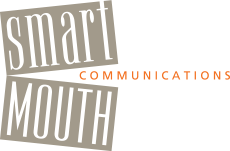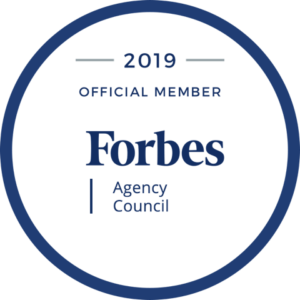SmartMouth Talks!
New Year, New ___ ?
 res·o·lu·tionˌrezəˈlo͞oSH(ə)n/ noun 1. a firm decision to do or not to do something.
res·o·lu·tionˌrezəˈlo͞oSH(ə)n/ noun 1. a firm decision to do or not to do something.
It’s that time of year. For as many people as I know who make resolutions about physical fitness, I seem to know just as many who make resolutions about communication skills.
If you have been kicking yourself and muttering any of the following under your breath over the past year – “I need to get some coaching, I need to be a better communicator.” Or, “Next time, I want to go in there and knock their socks off.” Or, “Okay, this year I’m going to work on my presentation skills.” – you’ll want to read on.
There’s no magic bullet and no one-size-fits-all coaching remedy to help you be a better communicator or presenter. There is, however, one really important, knowledgeable, insightful person already in the mix – you! – and so I’m designating you as your own coach.
And here’s how I suggest you begin – 1) read, and 2) make two lists. Pretty simple. Read this blog, read others, read whatever you can get your hands on that’s relevant to you and your career and the venues in which you communicate. Then make two lists – one to keep track of what you want to start doing differently, and the other to keep track of what you want to stop doing.
According to the dictionary definition, the word resolution implies an intention to change. Change is much easier said than done. That’s why in order to make it doable, you’ll want to be more specific than “I want to be a better communicator” or “I want to get some presentation skills coaching.” You’ll want to break it down into “starts and stops,” so that you can itemize and track what change looks like for you.
Be a keen and objective (well, as objective as possible) observer of yourself and others. Check in with your lists once a month or so, adding new insights and ideas on the “start list” and hopefully crossing off old and bad habits from the “stop list.” Be fair and honest with yourself, and relish even the smallest “starting” and “stopping” victories.
Remember: Communication is the currency of your success. You exchange words and ideas more often than you exchange money. Make your communications as valuable as you possibly can this year!
Holiday Wish for the New Year!

Giving Thanks and All That
 Ah, ‘tis the season of gratitude.
Ah, ‘tis the season of gratitude.
Just last week, we gave thanks for all that we’re fortunate to have in our lives – family, friends, food, shelter and so on. You need to look no further than your favorite social media sites to find countless memes that remind you of what to be grateful for and how to do it, especially at this time of year.
In fact, social media provides a never-ending parade of reminders about how to achieve higher levels of happiness, success as well as gratitude. I am as drawn to those reminders as the next person and I will admit, I agree with every beautiful, poignant saying I come across. I want to savor and save each one, but I rarely do.
Why are we posting, liking, and sometimes saving these images that 10 years ago would have been just a kitchy collection of refrigerator magnets? What are we striving for, feeling we’re lacking, or wanting to make better? Our lives, our relationships, our careers? If so, this is admirable, noble striving. But is it necessary?
Here’s my spin on this phenomenon: You’re drawn to these memes and you strive because you’re already good. You’re really good – you care, you make effort, you seek improvements, you’re on it. I bet you could make your own series of memes – based on your experiences and successes in your life, relationships and career – to inspire others. This is the thing: you’re already good and that’s why you are looking for more.
Because I’m a communications coach and not a life coach, let me translate this into relevant terms for those of you who are here for communication advice.
If you have worked with me, you know that my coaching is skewed heavily toward the content side (e.g. how to organize material, open and close) versus the delivery side (e.g. body language, voice). I have a fundamental philosophy about this, which is that if you are invited or expected to go to the front of the room, then you already have exhibited a certain level of confidence, competence and credibility. What you need, in that case, is to work on the finer points of grabbing and holding attention – and being really impressive. If that happens to require work on the delivery side, then so be it, but in my experience it usually requires more work on the content side.
Communication coaching, therefore, is not necessarily only for the ground floor level, it’s also for the top several floors. Working to up your game as a communicator or presenter is not something you do because you aren’t good or haven’t arrived, it’s something you do because you are good, you are successful … and you’re looking for that little bit more, that something extra to continue to set you apart.
Take a moment to turn your gratitude inward and appreciate who and where you are right now. Only then will you be ready and able to reach for more.
Kick it up a notch!
 “What are you working on these days?”
“What are you working on these days?”
Pretty common question, right? What does your usual response sound like? Are you vague or are you detailed? Or does the question cause brain paralysis and stump you?
If I were to guess, your typical response, after you recover from the brain paralysis, probably sounds a lot like a checklist – projects, clients, cases, tasks, deadlines. Those typical responses are more than adequate; after all, they’re factual, to the point, and no-fluff.
But what are you leaving on the table? If you believe, as I do, that communication is the currency of success, then you’ll want to maximize the value of your communications every time you have the opportunity.
It doesn’t take much to kick things up a notch. Not to worry, you don’t have to self-promote or oversell anything. You just need to add the why, the value, or the purpose to your checklist items.
Here are some examples:
“I’m completing a software upgrade … so that our reporting is more consistent across the divisions and less prone to human error.”
“I’m planning our inaugural fundraising luncheon … in an effort to put a new twist on our brand and maximize attendance for our most important annual event.”
“I’m working with Client X on a project … that will enhance their ability to retain customers.”
“I’m still overseeing all of HR, IT and Finance for the company … basically keeping all the admin and support functions humming along so that everyone else can do their jobs well.”
By adding a “so that” clause at the end of your checklist item, you enhance not only the value of your work but also your own worth and reputation.
The difference between being informative and being influential is simply in being able to communicate the why or the value of your work. It’s pretty easy once you get the hang of it. Try it out, kick the value of your communication currency up a notch or two!
When S^*t Happens
 Mistakes, accidents, and breaches of reputational integrity happen. And when they do, there is an urgent duty for an organization to respond. Lawyers and crisis communications advisors huddle to hash out what the Communicator in Chief – usually the CEO – can and should say. While these occasions almost always call for #transparency and #graciousness, in the end, what comes out of the top executive’s mouth is up to him or her.
Mistakes, accidents, and breaches of reputational integrity happen. And when they do, there is an urgent duty for an organization to respond. Lawyers and crisis communications advisors huddle to hash out what the Communicator in Chief – usually the CEO – can and should say. While these occasions almost always call for #transparency and #graciousness, in the end, what comes out of the top executive’s mouth is up to him or her.
Recently, s^*t happened to Volkswagen and, while the CEO lost his job over the company’s widespread deception, the #transparency and #graciousness of his initial response might help save VW in the court of public opinion. The biggest obstacle facing VW now is regaining public trust, which will only happen if the company continues to communicate with the open and gracious language that the former CEO Dr. Winterkorn used as soon as the crisis began. [Read it here.]
Two other major public crises offer a study in contrasts for when s^*t happens (excerpted below from Jock Talk: 5 Communication Principles as Exemplified by Legends of the Sports World):
Johnson & Johnson CEO James E. Burke was widely praised for handling one of the worst corporate crises in one of the best and most proactive ways during the Tylenol poisoning episode in 1982. Seven people, including one child, died from cyanide-laced Tylenol pills in the Chicago area. From a crisis management point of view, Burke’s actions and words were exemplary. In response to the 1982 events, he ordered one of the first massive product recalls, pulling 31 million bottles (with a retail value of $100 million) of the nation’s best-selling pain reliever from shelves across the country and replacing them as soon as possible with what was at the time a brilliant innovation: tamper-resistant packaging, a quick-turnaround company initiative that Burke personally oversaw. The entire effort saved the Tylenol brand and reinforced J&J’s reputation and i ts long-term shareholder confidence.
From a communication standpoint, Burke was lauded for making himself available and accessible to the media during the crisis and for offering comments that were marked by compassion, genuine concern for the public’s safety, and open acknowledgment of the importance of the public’s trust. “People forget how we built up such a big and important franchise,” said Burke. “It was based on trust.”
In subsequent decades, Burke was showered with accolades for saving and rebuilding a brand and the corporation behind it and for his candor in the face of a crisis that threatened to take down both. In 2000 he was awarded the Presidential Medal of Freedom by President Bill Clinton, and three years later Burke was recognized by Fortune magazine as one of history’s ten greatest CEOs. Yet despite all of the attention and acclaim accorded him, in 2003 Burke reflected on the crisis: “When crises occurred that we never could have foreseen, our customers stuck by us in ways we never could have imagined. A company credo that put customers first and shareholders last ultimately benefited both groups.” Burke’s comments contained subtle deflections of praise along with a sincere sharing of recognition with others. Graciousness and leadership. Period.
In stark contrast, let’s look at the public remarks of former BP CEO Tony Hayward following the Deepwater Horizon disaster in 2010. When the explosion and sinking of an oil rig caused dangerous and unprecedented amounts of oil to spill into the Gulf of Mexico, the company took many of the right communications measures, including apologizing and reassuring the public through ads and public statements. But then came the CEO’s career-defining gaffe: In the face of loss of lives and livelihoods, Hayward said, on camera, “There’s no one who wants this thing over more than I do, I’d like my life back.” His lack of self-awareness and sensitivity concerning his audience met such broad criticism that Hayward resigned and was replaced a few short months after the incident.
In the face of difficulty, there is always room for a leader to step in and frame public discourse or sentiment. This is similar to what clergy do when they deliver a eulogy, offering the comfort and perspective their audience needs in that moment of loss. You, as a leader in an organization, will no doubt face moments when your audience is counting on you to tell them what they should do with their mixed, confusing, or sad feelings. And if the moment is big enough, what you say should be something that will help them move forward and that will endure.
Separate Your Big and Little Fish
 You know the saying “life is short, eat dessert first,” right? Well, in my view, the communication equivalent is “attention spans are short, deliver the point first.”
You know the saying “life is short, eat dessert first,” right? Well, in my view, the communication equivalent is “attention spans are short, deliver the point first.”
Presentations are too often long and tedious – a phenomenon that has given rise to short presentation formats like TED Talks, Pechakucha, and Takahashi. Audiences cannot get enough of these nano-presentations.
But how do you get there? How do you deliver “really important stuff” in short order like that? The answer is: Regardless of whether you have 6, 18 or 60 minutes, you deliver the main point first. Yep, serve dessert first.
Attention spans are and always have been short. What makes grabbing and holding attention more difficult these days is that we face more competition for attention. Handheld devices haven’t necessarily shortened people’s attention spans, like you might think, but they have provided audience members with what is literally a handy diversion.
In order to grab and hold onto your audience’s attention, you must prioritize – in two ways:
1. First, prioritize by bringing only the most relevant and compelling material to the presentation; you cannot bring everything you know about your topic.
2. Second, prioritize by flipping typical chronology and delivering your conclusion before you present your evidence (serve dessert first). You can do this for the presentation overall, as well as for each section of your presentation.
Let’s deconstruct how we typically communicate: When we want to make a point we usually present all our evidence and then finish with a conclusion, our main point. What if we were to flip the order and reconstruct? How about if you were to present your main point – or conclusion – first and then back it up with your evidence? This way, you grab your audience’s attention and give them context for understanding where all the information fits and why it’s significant so they’ll continue to pay attention.
If we were to deconstruct even further and dig into the two elements we’ve been talking about – conclusion and evidence – we arrive at what I call the separation of messages and information. For this explanation, I often use fish as a metaphor and retention-boosting imagery – big fish and little fish. Messages are your conclusions; they convey value or significance. I like to call messages your “big fish.” Information is your evidence; it’s all the background, details, facts and data that support your big fish. I call information your “little fish.”
The culprit behind the tediousness of most presentations is the little fish. Too often there are too many of them and they are delivered first. This, of course, forces the audience to wait to find out why the little fish are even important and then causes your audience to distract themselves.
Do yourself and your audience a big favor: Do the work ahead of time to separate out your big fish from your little fish and then lead with your big fish (serve dessert first). Your big fish will grab your audience’s attention and not only will it give them a reason to hang in there with you but it also will give them something they can remember.
Take a Good, Hard Look
 Time for some hands-on learning!
Time for some hands-on learning!
The learning is in your hands today, and the lesson is transparency. If you choose to read on, you’ll pick up a few tips about being a transparent communicator and then you’ll get a chance to practice what you learn.
But first, what do I mean by transparency anyway? It’s kind of a buzzword, right? Well, transparency in communications comes in two forms—informational and emotional. It’s about being open and real with news and information as well as with feelings and reactions.
Here are 3 tips for being a more transparent communicator:
1. Let your audiences know what they can expect or what they’re going to get from you. Spell out your “win” – or your desired outcome – in the opening seconds of your meetings and presentations. Tell your audiences what you want them to think, or know or do by the end.
2. Pay attention to crises and criticisms, but don’t necessarily run from them or fight back. There may be some important truths you want to stand by or back up. Be open to owning the situation, whether bad or good. It scores big reputational points for credibility and trust.
3. Audiences are smart. Scrutiny and skepticism can be harsh. Be as open, honest, and forthright as you can. Your audiences will see through you no matter what. So be real. It’s easier on you and always much appreciated by them.
Now I turn it over to you!
Choose one of the following two exercises and see how it feels to try a more transparent approach:
- Think about the lowest or weakest point in your business or professional life. What was it?
What aspect of it makes you feel vulnerable or uncomfortable to talk about? Can you come up with a way to discuss or address it in an open and direct way?
- Have you ever had to answer questions about a business problem or crisis? What happened?
Write down the questions you remember and practice answering them with transparency in both information and emotion. Make notes about your answers if that would be helpful.
[Excerpted in part from Jock Talk: 5 Communication Principles for Leaders as Exemplified by Legends of the Sports World, www.jocktalkbook.com]
Um, why the Toothbrush?
 I have it all set up. The camera guy is looking through the lens of his TV studio camera, which is set on a tripod and fixed on the two chairs that face each other. The big-screen monitor for watching instant replays is next to the two chairs. The young NBA player walks into the room after practice. He has showered and dressed in his team sweats, and while everyone else has gone home for the afternoon, he has agreed to submit to some one-on-one media training in advance of what promises to be a busy season on the floor. He’s barely a man in chronological age, but he’s physically huge, at just under seven feet tall. We shake hands; he sits down. I ask him if he’s ready to begin. He says he is.
I have it all set up. The camera guy is looking through the lens of his TV studio camera, which is set on a tripod and fixed on the two chairs that face each other. The big-screen monitor for watching instant replays is next to the two chairs. The young NBA player walks into the room after practice. He has showered and dressed in his team sweats, and while everyone else has gone home for the afternoon, he has agreed to submit to some one-on-one media training in advance of what promises to be a busy season on the floor. He’s barely a man in chronological age, but he’s physically huge, at just under seven feet tall. We shake hands; he sits down. I ask him if he’s ready to begin. He says he is.
The camera is rolling. I hand him an ordinary toothbrush. He looks at me, perplexed, clearly thinking, This is not what I agreed to do for the next two hours.
I ask him only a few questions about the toothbrush: What is that? What do you do with it? Do you like it? How often do you use it? What do you like about it?
He answers haltingly and offers simple, one-word responses.
Then we’re done with the exercise. We watch the instant replay of his “toothbrush interview,” and finally I explain the method behind my madness.
I do the toothbrush exercise with many of my clients, both athletes and executives. It is a defining and memorable exercise, and it is always totally unexpected . . . but not always well received, at least initially. After all, what does a toothbrush have to do with sports or, for that matter, with communicating?
Nothing. But it has everything to do with being able to think about your audience, be yourself, be nice, get to the point, and be prepared for all of the above.
The lesson of the toothbrush exercise is that no matter how mundane, obvious, or self-explanatory the questions or issues are, you need to be prepared at all times to address your audience in a positive, sincere, and robust manner. And there’s nothing more mundane, obvious, or self-explanatory to have to talk about than a toothbrush.
[Excerpted in part from Jock Talk: 5 Communication Principles for Leaders as Exemplified by Legends of the Sports World, www.jocktalkbook.com]
Communication = Success
 I view communication as the everyday currency of business; it’s how we get things done. Our success is ultimately determined by interactions with employees, customers, communities, suppliers, shareholders, regulators, and other stakeholders. And while most organizations and executives have a mission statement, and many articulate a set of core values—for how they conduct their business or treat each other and their customers—most overlook standards, goals, or guidelines for communicating. Communication is actually the channel for executing a company’s mission, its values, and its expectations for excellence, accountability y, productivity and efficiency. How else could these be realized?
I view communication as the everyday currency of business; it’s how we get things done. Our success is ultimately determined by interactions with employees, customers, communities, suppliers, shareholders, regulators, and other stakeholders. And while most organizations and executives have a mission statement, and many articulate a set of core values—for how they conduct their business or treat each other and their customers—most overlook standards, goals, or guidelines for communicating. Communication is actually the channel for executing a company’s mission, its values, and its expectations for excellence, accountability y, productivity and efficiency. How else could these be realized?
A recent study in the Journal of Marketing Communications finds a causal link between communication effectiveness and economic performance. “Companies that align communication with the corporate mission and strategy score significantly better not only on ‘soft’ measures such as image and awareness but also on ‘hard’ economic measures, especially on relative market success in the industry.” In sum, the more effective a company is at communicating—internally and externally—the greater the company’s general performance. Perhaps most telling, the Journal found that companies whose executives support improving communication, and recognize its economic value, performed better than companies without supportive leadership.
Similarly, Cheryl Snapp Conner, @CherylSnapp, recently wrote in Forbes about a new study that finds a connection between a CEO’s presentation skills and the pricing of an IPO. Executives that have a confident and commanding presence actually increase the value of their companies’ IPOs.
A lot of people, including Cheryl Connor, found this pretty amazing – myself included. But it confirmed for me what I have been saying for a long time: that a focus on communication adds value to a company. And I do not mean just some amorphous value of customer and employee goodwill, but actual performance value. Like these two studies show, companies and executives that value and are skilled at communication perform better financially.
[Excerpted in part from Jock Talk: 5 Communication Principles for Leaders as Exemplified by Legends of the Sports World, www.jocktalkbook.com]
4 Simple Podium Tips
 Most ambitious, achieving professionals already have a measure of confidence, charisma, and presence that got them to where they are and that will carry them through a trip to the podium. Nonetheless, how you comport and present yourself at the podium is pretty critical.
Most ambitious, achieving professionals already have a measure of confidence, charisma, and presence that got them to where they are and that will carry them through a trip to the podium. Nonetheless, how you comport and present yourself at the podium is pretty critical.
Here are 4 simple best practices tips that can enhance your delivery:
- Use your voice.
Modulate your tone as a way of changing things up for the audience. Attention spans are short and demand regular stimulus changes. Try to speak louder, softer, faster, or slower as appropriate for different portions of your presentation. And pause. Pauses are good; your audience needs time to digest your ideas.
- Use the room.
If there’s a podium, try to get out from behind it. And, if possible, move around the room. That, too, will stimulate attention, changing the scene a bit and keeping the audience alert. However . . .
- Don’t pace, and be aware of any fidgety habits.
Remember what your third-grade teacher told you the first time you stood up to give a book report: Stand up straight. Don’t jingle or play with things in your pockets. Don’t fuss with your hair. We all want to hear what you have to say.
- Make eye contact.
That’s huge. And not just with one friendly face. Try to cover as many faces and as much of the room as you can. Do not be put off (and I hear this all the time) by that “one guy in the front who was glaring at me the whole time.” One man’s glare is another man’s look of concentration. You never know, so don’t be distracted by one face. Just keep on looking at everyone.
[Excerpted from Jock Talk: 5 Communication Principles for Leaders as Exemplified by Legends of the Sports World, www.jocktalkbook.com]



